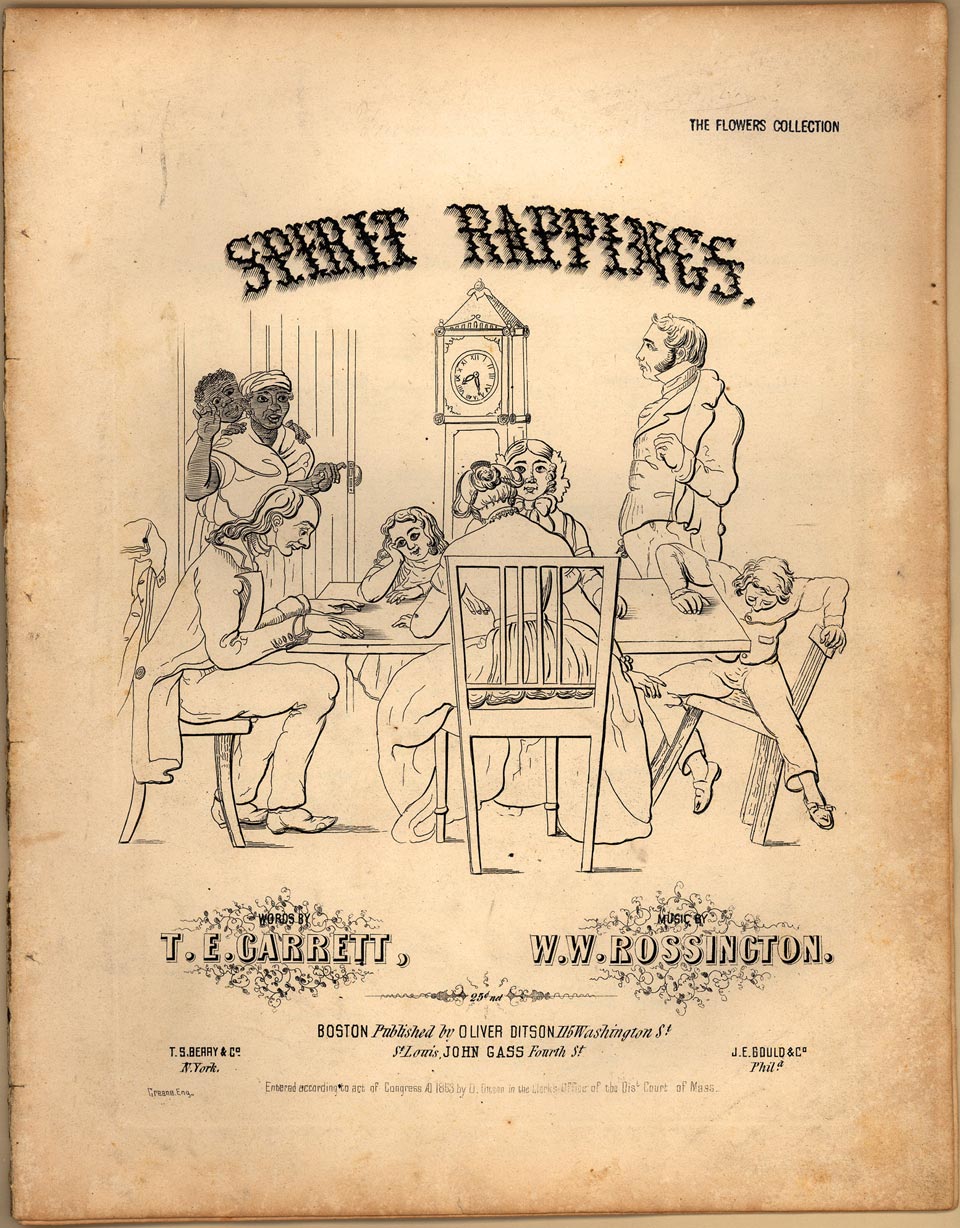In 1896, Virginia Anderson, nicknamed Jennie, filed for divorce from her husband, Epps G. Anderson, in the Scott County Circuit Court. He was in his seventies, she in her fifties, and both had grown children from previous marriages. Like many other divorce cases, Virginia and Epps accused each other of a variety of shortcomings including abuse, abandonment, property mismanagement, and infidelity. Having come across cases like this before, I was not expecting it when half way through his deposition Epps stated that “after July the 4, 1896 there had been a knocking spirit down at Doc. Kyle’s. Jennie said she would go down there …when she came back said she heard it and seen it act and it knocked on her… and she said before she started she was going to bring it up here and run me off or scare me.” Epps went on to describe a two-hour episode occurring in the night, with chairs being knocked to the floor, doors blowing open, ghostly footsteps, and a spirit that answered questions by knocking on the walls.
Epps’ daughter, Mollie Edens, also testified in the divorce case and described an encounter with the entity in which Virginia asked the spirit if it was the good spirit or the evil one and told it to “knock three licks if the evil spirit, then [it] knocked three. She [Virginia] says if I have done anything to old Eps [sic] to quarrel on me. If I have knock three licks. If I have not don’t knock narry [sic] one. There was narry [sic] lick knocked, then directly she said they was something under her bed went like a chicken fluttering from the floor up against the bed.”
Ghosts who spoke with the living through rappings and knockings were not unique to the state of Virginia but were commonly known throughout the United States during the nineteenth century.
Perhaps the most famous example included the séances performed by sisters Margaret and Kate Fox, who displayed their ability to summon a spirit and have it communicate through a series of raps in front of audiences in the United States and abroad. However, by the late 1880s, the sisters admitted that their exhibitions and medium abilities were faked.
So, did the incidents in the Andersons’ home really take place as the result of a paranormal visitor? At least one occurrence definitely did not. In his deposition, Henry M. Bryant admitted that with the consent of Virginia, he and his brother Charley staged an encounter with the spirit to frighten Epps, who at the time was nearly blind. The other episodes, well, the case files do not definitively say one way or another – they may have just been an angry wife’s attempt to chase her husband away or there could have been a ghost looking to communicate from beyond the grave.
In the end, the judge presiding over this suit decided that neither party had presented any evidence to justify a divorce, and in 1898 dismissed the case from the docket.
Virginia Anderson vs. Epps G. Anderson (1898-031) and other Scott County chancery causes are currently being processed and digitally reformatted. An index of the Scott County causes is available for viewing on the Chancery Records Index found at Virginia Memory.
-Sam Walters, Local Records Archivist








